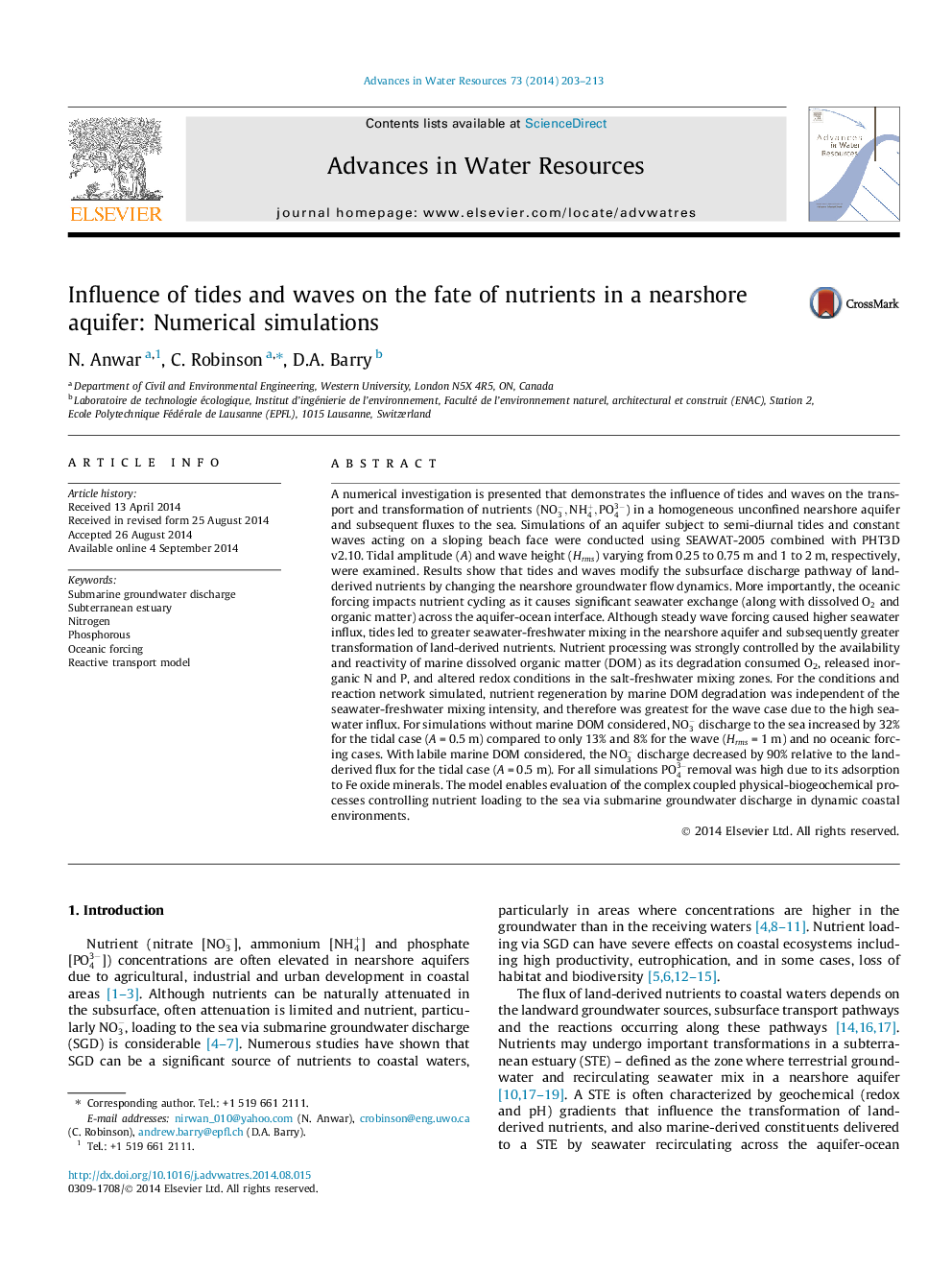| کد مقاله | کد نشریه | سال انتشار | مقاله انگلیسی | نسخه تمام متن |
|---|---|---|---|---|
| 4525477 | 1625636 | 2014 | 11 صفحه PDF | دانلود رایگان |
• Tides and waves alter land-derived nutrient discharge pathways and transformations.
• Nutrient fate is strongly controlled by inputs of marine-derived constituents.
• Fate of land-derived nutrients depends on redox conditions in mixing zones.
• Simulated nutrient regeneration from DOM degradation not controlled by mixing.
A numerical investigation is presented that demonstrates the influence of tides and waves on the transport and transformation of nutrients (NO3-,NH4+,PO43-) in a homogeneous unconfined nearshore aquifer and subsequent fluxes to the sea. Simulations of an aquifer subject to semi-diurnal tides and constant waves acting on a sloping beach face were conducted using SEAWAT-2005 combined with PHT3D v2.10. Tidal amplitude (AA) and wave height (HrmsHrms) varying from 0.25 to 0.75 m and 1 to 2 m, respectively, were examined. Results show that tides and waves modify the subsurface discharge pathway of land-derived nutrients by changing the nearshore groundwater flow dynamics. More importantly, the oceanic forcing impacts nutrient cycling as it causes significant seawater exchange (along with dissolved O2O2 and organic matter) across the aquifer-ocean interface. Although steady wave forcing caused higher seawater influx, tides led to greater seawater-freshwater mixing in the nearshore aquifer and subsequently greater transformation of land-derived nutrients. Nutrient processing was strongly controlled by the availability and reactivity of marine dissolved organic matter (DOM) as its degradation consumed O2, released inorganic N and P, and altered redox conditions in the salt-freshwater mixing zones. For the conditions and reaction network simulated, nutrient regeneration by marine DOM degradation was independent of the seawater-freshwater mixing intensity, and therefore was greatest for the wave case due to the high seawater influx. For simulations without marine DOM considered, NO3- discharge to the sea increased by 32% for the tidal case (A = 0.5 m) compared to only 13% and 8% for the wave (HrmsHrms = 1 m) and no oceanic forcing cases. With labile marine DOM considered, the NO3- discharge decreased by 90% relative to the land-derived flux for the tidal case (A = 0.5 m). For all simulations PO43-removal was high due to its adsorption to Fe oxide minerals. The model enables evaluation of the complex coupled physical-biogeochemical processes controlling nutrient loading to the sea via submarine groundwater discharge in dynamic coastal environments.
Journal: Advances in Water Resources - Volume 73, November 2014, Pages 203–213
